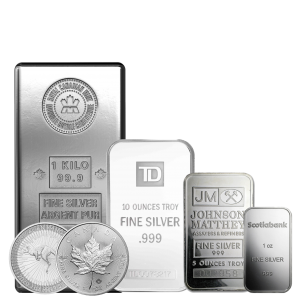

Back
XAU vs HUI Index: Key Benchmarks for Gold Stock Performance
September 18, 2025
Gold mining stocks are a popular investment option for those who are interested in gaining leveraged exposure to precious metals but who do not want to limit themselves to actual bullion, such as a gold bar or a one-ounce gold coin . On the other hand, how do you evaluate the success of these mining equities in comparison to the performance of the larger gold market? That is where the XAU Index and the HUI Index are useful. Both indices serve as benchmarks for gold equities, providing information on the performance of firms that mine gold and other businesses that are associated with gold mining in comparison to the price of bullion.
What Is the XAU Index?
In 1983, the XAU Index, which is also known by its official name, the Philadelphia Gold and Silver Index, was made available. It follows roughly 30 precious metal mining firms, with a significant concentration on gold and silver producers. The XAU is representative of the equity side of the sector, which includes businesses that mine, process, and distribute metals. This contrasts with bullion, which is represented by the price of gold per ounce or silver per ounce .
The XAU index can provide a strong representation of investor mood in the mining industry because the profitability of these firms tends to fluctuate in direct proportion to the price of gold.
What Is the HUI Index?
The HUI Index, commonly known as the NYSE Arca Gold BUGS Index, was created in 1996. "Basket of Unhedged Gold Stocks" is what the abbreviation "BUGS" stands for. Unlike other miners that hedge their production by locking in future prices, businesses in the HUI index are generally unhedged. As a result, their revenues are more directly correlated with fluctuations in the live gold price .
Why Do They Matter to People Who Invest?
These indices might not appear to be important to individuals who only keep track of actual bullion. But for stock investors, they provide multiple benefits:
- • Market benchmarking: The XAU and HUI indexes provide investors with a point of reference for gold mining firms in a similar way to how the S&P 500 index monitors equities in the United States.
- • Leverage Insight: Mining stocks tend to exhibit more significant price fluctuations than real bullion. For instance, a five percent increase in the price of gold per ounce might result in a ten to twenty percent gain for those miners who are not hedged. The HUI does a better job of reflecting this.
- • Diversification Tracking: Investors looking at mining businesses with bullion might use these indexes to balance portfolios between physical metals and equities exposure.
- • Investment Timing: When the HUI index considerably outpaces gold’s performance, it might imply over-optimism in equities. On the other hand, if it is behind, it may identify chances for undervaluation.










